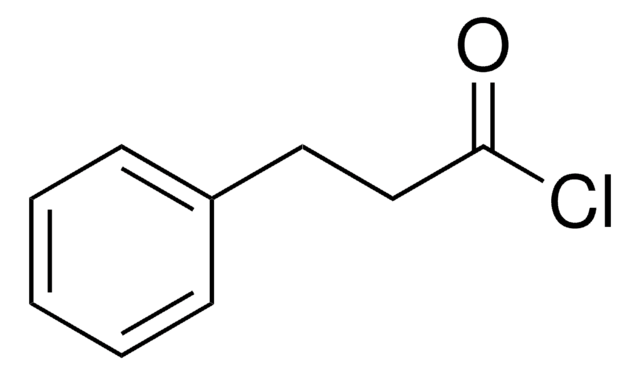135232
Hydrocinnamic acid
99%
Synonym(s):
3-Phenylpropionic acid, Benzylacetic acid
About This Item
Recommended Products
Assay
99%
form
solid
bp
280 °C (lit.)
mp
45-48 °C (lit.)
solubility
ethanol: soluble 50 mg/mL, clear, colorless to faintly yellow
density
1.071 g/mL at 25 °C (lit.)
SMILES string
OC(=O)CCc1ccccc1
InChI
1S/C9H10O2/c10-9(11)7-6-8-4-2-1-3-5-8/h1-5H,6-7H2,(H,10,11)
InChI key
XMIIGOLPHOKFCH-UHFFFAOYSA-N
Looking for similar products? Visit Product Comparison Guide
General description
Application
Storage Class Code
11 - Combustible Solids
WGK
WGK 1
Flash Point(F)
235.4 °F - closed cup
Flash Point(C)
113 °C - closed cup
Personal Protective Equipment
Certificates of Analysis (COA)
Search for Certificates of Analysis (COA) by entering the products Lot/Batch Number. Lot and Batch Numbers can be found on a product’s label following the words ‘Lot’ or ‘Batch’.
Already Own This Product?
Find documentation for the products that you have recently purchased in the Document Library.
Customers Also Viewed
Our team of scientists has experience in all areas of research including Life Science, Material Science, Chemical Synthesis, Chromatography, Analytical and many others.
Contact Technical Service












